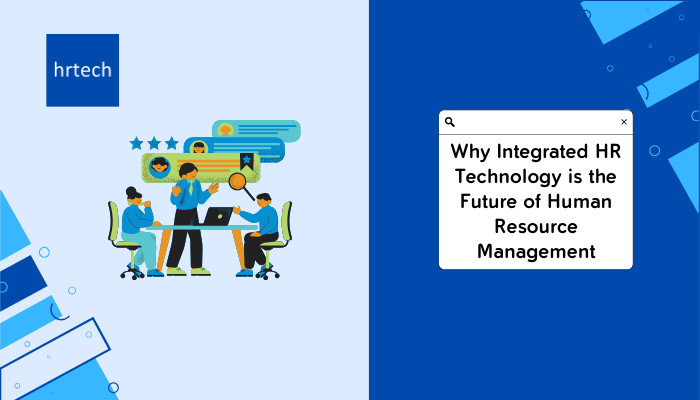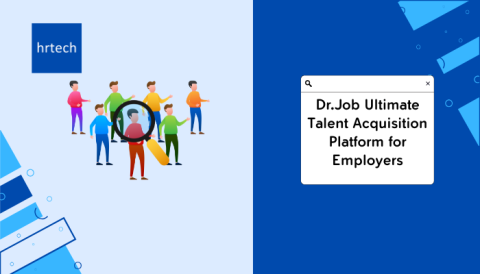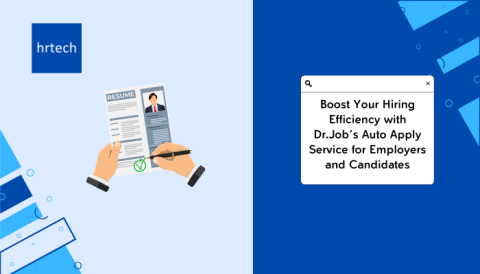Technological advancements in the arena of human resource management are changing how organisations oversee their workforce through an integrated HR system. Essentially, it incorporates payroll, recruitment, compliance, performance tracking, and more in one unified place, thereby enhancing efficiency, reducing errors, and bringing employees closer to achieving the organisational goals.
This article tells the history of HR technology, key benefits and standout features of integrated HR systems. Additionally, it provides insight into how technology changes can be tricky for businesses when implementing them, and why incorporating solutions like Officenet HRMS is very important for being future-ready.
What is an Integrated HR System?
An integrated HR system is a comprehensive software solution that integrates various HR processes, such as payroll, recruitment, performance management, compliance tracking, and employee engagement, into one centralized platform.
- Unified Ecosystem: It eliminates the need for standalone tools, ensuring that all HR functions operate in sync.
- Real-Time Data Sharing: Information flows seamlessly between modules, enabling quick access to accurate, updated data.
- Scalability: These systems are designed to adapt to an organisation’s growth, whether it’s onboarding new employees or managing a larger, distributed workforce.
Streamline your HR processes with Officenet HRMS, a fully integrated platform that seamlessly manages the entire employee lifecycle, from hiring to retirement, all through a single, user-friendly interface.
The Role of Integration in Centralizing and Automating HR Processes
Integration plays a pivotal role in modernising HR management by centralising data and automating time-intensive tasks.
- Data Centralization:
- Combines employee records, attendance, payroll, and compliance data in a single repository.
- Reduces data silos, ensuring every department works with the same accurate information.
- Automation of Repetitive Tasks:
- Tasks like attendance tracking, payroll calculations, and compliance monitoring are automated, saving significant time and reducing errors.
- Automation also enables real-time alerts for tasks like leave approvals or compliance deadlines, ensuring timely action.
- Streamlined Operations:
- Integration eliminates the need for repetitive data entry across multiple systems.
- For instance, changes in employee records are automatically reflected in payroll, performance reviews, and compliance reports.
By centralising and automating HR processes, integrated HR systems like Officenet HRMS empower organisations to reduce administrative workloads and focus on strategic HR initiatives.
Benefits of Centralized Platform
Organizations leveraging centralized HR systems experience transformative benefits, including:
- Improved Decision-Making:
- Access to unified, real-time data allows HR managers to make data-driven decisions on hiring, training, and workforce planning.
- For instance, analytics can highlight skill gaps and help design targeted training programs.
- Cost Efficiency:
- Automation reduces administrative costs by up to 40%, according to a Deloitte report.
- Centralisation eliminates redundancies, ensuring resources are allocated efficiently.
- Enhanced Employee Experience:
- Employees benefit from self-service portals that allow them to manage leave, access payslips, and provide feedback without HR intervention.
- A streamlined HR experience increases satisfaction and retention.
Centralized HR management has evolved beyond mere operational efficiency to become a strategic driver of better compliance, enhanced employee engagement, and a stronger, more agile workforce. This evolution sets the stage for understanding how integrated HR systems have transformed over time. With platforms like Officenet HRMS, businesses can seamlessly unlock these benefits and stay ahead in a competitive landscape.
Historical Evolution of Integrated HR System
Today, the integrated HR system is playing a very important role in addressing the complexities of modern workforce management. The market for this is rapidly growing, showing its importance. As organisations strive to streamline their operations and remain competitive, the adoption of integrated solutions like Officenet HRMS has become a strategic imperative.
1. From Manual Processes to Standalone Software: Early HR practices relied heavily on manual paperwork, which was both time-consuming and error-prone. The introduction of standalone HR software marked the beginning of automation in HR.
2. Market Growth and Investment in HR Technology: According to Fortune Business Insights, the global HR technology market is projected to grow at a 9.2% CAGR, reaching $81.84 billion by 2032. This growth reflects businesses’ increasing reliance on integrated HR solutions.
3. Adapting to Global HR Challenges: As businesses expand globally, the complexity of managing diverse workforces increases. Integrated HR technology, such as Officenet HRMS, equips companies to address these challenges efficiently.
These systems combine core functionalities into a unified platform, simplifying operations and enabling a seamless experience for HR teams and employees alike, offering features that make integrated HR systems indispensable for modern businesses.
The Standout Features of Integrated HR System
By centralising critical processes and enabling automation, the integrated HR system allows organisations to focus on strategic growth while enhancing overall efficiency.
Here’s a closer look at the core features of integrated HR systems, including how solutions like Officenet HRMS empower businesses to unlock their full potential:
1. Centralized Database:
- A unified repository for employee information, accessible in real time.
- Reduces duplication and enhances data security.
2. Self-Service Portals:
- Employees can handle tasks like leave requests, expense claims, and accessing payslips independently.
- Boosts employee satisfaction and reduces HR team workload.
3. Integrated Tools:
- Payroll, performance reviews, and onboarding processes are interconnected, creating a seamless experience for employees and HR teams.
The features of integrated HR systems are not just about convenience; they are designed to deliver measurable benefits across the organisation. Businesses are rapidly embracing integrated HR technology as the spine of their HR strategies, from improving compliance to boosting employee engagement and so much more.
10 Reasons Why Businesses are Embracing Integrated HR System for their Workforce Management
Integrated HR technology is no longer a luxury; it’s a necessity for organisations aiming to thrive in a dynamic and competitive environment.
Here are 10 compelling reasons why integrated HR technology is shaping the future of human resource management:
1. Enhanced Data-Driven Decision-Making
- Unified HR data provides real-time insights into workforce trends, enabling smarter decisions.
- Managers can identify skill gaps, forecast hiring needs, and optimise resource allocation.
2. Improved Employee Experience
- A single, user-friendly platform allows employees to access information, submit requests, and receive updates effortlessly.
- Self-service portals and mobile access ensure convenience and engagement.
3. Streamlined Processes
- Integration reduces redundancies by connecting payroll, performance management, recruitment, and more into one system.
- Tasks such as onboarding and leave management become faster and more efficient.
4. Increased Productivity Across HR Functions
- Automation eliminates time-consuming manual tasks, allowing HR teams to focus on strategic initiatives.
- Employees can manage routine HR tasks independently, reducing dependency on HR staff.
5. Better Compliance with Labor Laws and Regulations
- Built-in compliance tools ensure adherence to local and global labour laws.
- Automated updates and alerts reduce the risk of penalties and legal challenges.
6. Enhanced Employee Engagement and Retention
- Real-time feedback mechanisms and personalized learning programs boost morale and career development.
- Recognition tools encourage a culture of appreciation, leading to higher retention rates.
7. Reduced Costs Associated with Manual Tasks
- Automating HR processes significantly lowers administrative expenses.
- Error-free payroll and compliance reporting reduce financial risks.
8. Improved Data Security and Privacy
- Advanced encryption and role-based access controls safeguard sensitive employee data.
- Regular updates ensure compliance with data protection regulations.
9. Improved Collaboration and Communication
- Centralised systems foster better collaboration across teams, ensuring smoother workflows.
- Communication tools and platforms enhance transparency and connectivity.
10. Competitive Advantage in Talent Acquisition
- Integrated HR systems streamline recruitment by providing real-time insights and seamless candidate tracking.
- A modern HR system signals to prospective employees that the company values innovation and efficiency.
Officenet HRMS embodies these benefits, offering a robust and scalable solution that adapts to the unique challenges of today’s workforce.
An integrated HR system is not just about managing employees, it’s about building a resilient, future-ready organisation. By adopting solutions like Officenet HRMS, businesses can stay ahead of the curve while fostering a culture of efficiency, engagement, growth and impacting employee experience.
Impact on Employee Experience
An integrated HR system goes beyond streamlining processes; it significantly enhances the employee experience by fostering convenience, engagement, and growth opportunities.
1. Seamless Information Access: Single sign-on systems allow employees to access all HR functions from one platform, simplifying their experience.
2. Flexibility and Engagement: Empowered employees can handle HR tasks on the go, improving engagement and satisfaction.
3. Enhanced Performance Management: Real-time feedback and goal-setting tools foster a culture of continuous improvement.
By utilising Officenet HRMS, organisations create a more engaging employee experience, boosting retention and morale.
While integrated HR technology offers numerous advantages, businesses must navigate certain challenges to ensure successful implementation and maximise its potential.
Challenges and Considerations of Integrated HR System
1. Integration Complexities: Combining legacy systems with modern technology can be challenging but pays off in the long run.
2. Investment in Upgrades: Implementing integrated HR systems requires initial investments, but businesses recover costs through increased productivity.
3. Training and Adoption: Proper training ensures employees and managers use the system effectively, maximising ROI.
Officenet HRM offers tailored onboarding and support to ensure a smooth transition to its HR technology platform.
Conclusion
An integrated HR system is no longer a luxury; it’s a necessity for businesses aiming to stay competitive. By centralising HR processes, automating tasks, and providing data-driven insights, these systems fuel long-term organisational growth.
Get in touch with Officenet today to explore how an integrated HR system can transform your HR management and set your organisation up for success.
Don’t just adapt, lead the future of HR with Officenet HRM!





